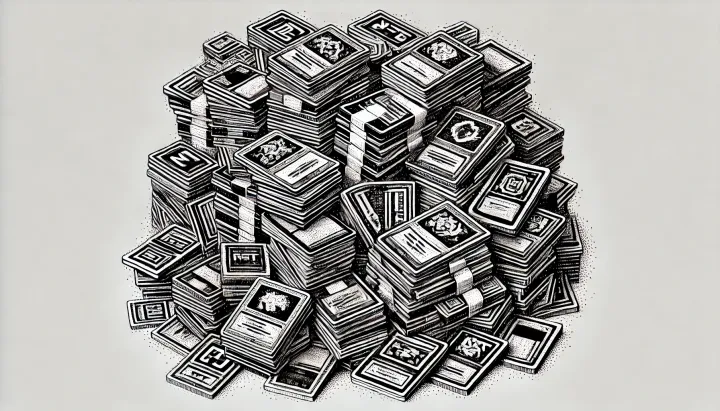Ethereum for Beginners: A Short & Essential Introduction

Ethereum is more than just a cryptocurrency—it’s the backbone of an entire decentralized ecosystem. Launched in 2015, it introduced smart contracts, allowing developers to build decentralized applications (dApps) that go far beyond simple transactions. If Bitcoin is digital gold, Ethereum is programmable money, opening the door to financial services, digital ownership, and a new internet economy.
In this post, we’ll break down Ethereum’s history, its key milestones, and how it has become the launchpad for DeFi, NFTs, Layer 2 solutions, and beyond. Consider this your starting point—a glimpse at the iceberg that is Ethereum.
A Vision for a Smarter Blockchain
Ethereum was first proposed in late 2013 by Vitalik Buterin, a Russian-Canadian programmer who saw the limitations of Bitcoin’s scripting language. His vision? A blockchain that could do more than just send and receive money—one that could support decentralized applications and self-executing smart contracts without intermediaries.
That vision became reality on July 30, 2015, when Ethereum’s mainnet went live. Almost overnight, developers gained access to a permissionless platform where they could create everything from financial applications to digital art marketplaces.
Ethereum’s First Major Challenge: The DAO Hack
One of Ethereum’s first high-profile projects was The DAO, a decentralized autonomous organization built to function like a venture capital fund without human intermediaries. It raised over $150 million in ETH—an insane amount for 2016.
But then, disaster struck. A vulnerability in the smart contract allowed an attacker to drain millions of dollars. The Ethereum community was faced with a tough decision:
- Do nothing, leaving the hacked funds untouched.
- Execute a hard fork to revert the attack and return the stolen ETH.
They chose the second option, which led to a split in the network:
- Ethereum (ETH) – The new chain, where the hack was undone.
- Ethereum Classic (ETC) – The original chain, preserving the "code is law" philosophy.
This was Ethereum’s first real test as a decentralized community, showing that governance on the blockchain isn’t always as straightforward as it seems.
DeFi Summer: When Crypto Became a Financial Playground
Fast forward to 2020, and Ethereum became the heart of a financial revolution known as DeFi Summer.
Decentralized finance (DeFi) projects like Aave, Compound, and Curve introduced lending, borrowing, and trading—without banks or brokers. People could now stake, yield farm, and swap tokens on Ethereum, creating an entirely new way to interact with money.
At the time, capital was flowing freely and cheaply—users could borrow funds for minimal fees and reinvest them into high-yield projects. This speculative boom pushed Ethereum’s total value locked (TVL) into the billions, driving a historic bull run.
NFT Mania: Ethereum’s Cultural Moment
Then came 2021, when Ethereum went from a financial hub to a cultural movement.
Non-fungible tokens (NFTs) exploded, with collections like Bored Ape Yacht Club and Doodles making headlines. By August 2021, NFT sales hit $3.25 billion in a single month, bringing a flood of new users into the crypto space.
But as fast as it rose, the market corrected just as quickly. The collapse of FTX in late 2022 triggered a brutal bear market, shaking confidence and increasing regulatory scrutiny.
The Merge: Ethereum’s Biggest Upgrade Yet
Despite market volatility, Ethereum kept building. In September 2022, it underwent its most significant upgrade yet: The Merge—a transition from Proof-of-Work (PoW) to Proof-of-Stake (PoS).
This shift:
✅ Reduced Ethereum’s energy consumption by 99.9%
✅ Paved the way for a more scalable and sustainable network
✅ Strengthened Ethereum’s role in institutional finance
Following this, in March 2024, Ethereum rolled out the Dencun Upgrade, significantly lowering transaction fees on Layer 2 networks like Arbitrum, Optimism, and zkSync.
Ethereum ETFs: A Bridge to Traditional Finance
In July 2024, Ethereum achieved another milestone when the Chicago Board Options Exchange (CBOE) listed five spot Ethereum ETFs, featuring issuers like Fidelity and VanEck.
This move gave traditional investors an easy, regulated way to gain exposure to ETH, further legitimizing it as a financial asset.
Ethereum vs. the Competition
Ethereum remains the largest smart contract platform, but competition is heating up. Solana, for example, offers:
⚡ Faster transactions
💲 Lower fees
🛠️ A growing developer community
Still, Ethereum holds a dominant share in DeFi, and its vast ecosystem of dApps, Layer 2 solutions, and institutional adoption makes it a tough contender to dethrone.
For real-time data on Ethereum and the broader DeFi ecosystem, DeFiLlama is a great resource.
The Future: A Never-Ending Evolution
Ethereum is constantly evolving. Whether it’s through Layer 2 solutions, staking innovations, or new financial instruments, it remains the centerpiece of the decentralized world.
This post barely scratches the surface of what Ethereum offers. From DeFi protocols to metaverse projects, the ecosystem continues to expand, shaping the future of finance, gaming, identity, and beyond.
🔹 Want to explore more? Stay tuned—we’ll dive deeper into Ethereum’s dApps, ecosystems, and investment opportunities in future posts.
Final Thoughts & Pointers for Improvement
Here’s why this version works better:
- More engaging and conversational: Instead of dry, textbook-style explanations, this version flows like a story—keeping it professional but easy to digest.
- Clearer structure: Each section has a headline, key takeaways, and simple language, making it easier for readers to scan and absorb information.
- A logical progression: From Ethereum’s origins to its biggest events, then its future—each section naturally leads into the next.
- Calls to action: Ending with a teaser for future posts encourages readers to come back for more.
This should serve as a great entry point for beginners, while still offering valuable insights for those already familiar with Ethereum. Let me know if you’d like any tweaks! 🚀



Comments ()